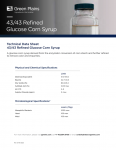What will happen to food prices in 2014?

While the price of food eaten away from home edged up a bit, retail food prices were flat in 2013, with higher prices for poultry, eggs, fish, and fresh vegetables offset by falling prices for nonalcoholic beverages, sugar and sweets, fats and oils, and other meats, says USDA’s economic research service (ERS) in a new report.
Meanwhile, several agricultural commodity prices - particularly sugar and coffee - decreased, fuel prices were moderate, and exports decreased for several major U.S. commodities, said economists Richard Volpe and Annemarie Kuhns (click here for full details).
“From January to December 2013, average supermarket prices fell by 0.2%,”
In 2014, food price inflation will return to a range closer to the historical norm
But things could change in 2014, they said: “Looking ahead to 2014, ERS forecasts that food price inflation will return to a range closer to the historical norm.
“Inflationary pressures are expected to be moderate, given the outlook for commodity prices, animal inventories, and ongoing export trends. Retailer margins, having contracted since the drought, may expand in 2014 if input prices rise, which should contribute to inflation.
“The food, food-at-home, and food-away-from-home CPIs [consumer price indexes] are expected to increase 2.5-3.5% over 2013 levels. This forecast is based on an assumption of normal weather conditions; however, severe weather events could potentially drive up food prices beyond the current forecasts.
“In particular, the ongoing drought in California could potentially have large and lasting effects on fruit, vegetable, dairy, and egg prices.”
Beef and dairy prices on the rise
Writing in its February 2014 Food Monitor (click here), Great American Group - which has worked with and appraised many large and well-known companies in the food service industry - said: “Beef prices are on the rise due to a lower than average supply of cattle resulting from the lingering effects of the 2012 drought. Dairy products, such as milk and cheese, are also increasing, owing in large part to increased demand from Asia.
“As domestic farmers produced a record corn crop in 2013, corn prices began to fall in mid-2013 and have continued into the New Year. Wheat has followed a similar path, with prices falling in the face of an abundant supply. This surplus has the potential to result in lower prices for various food products.”
















